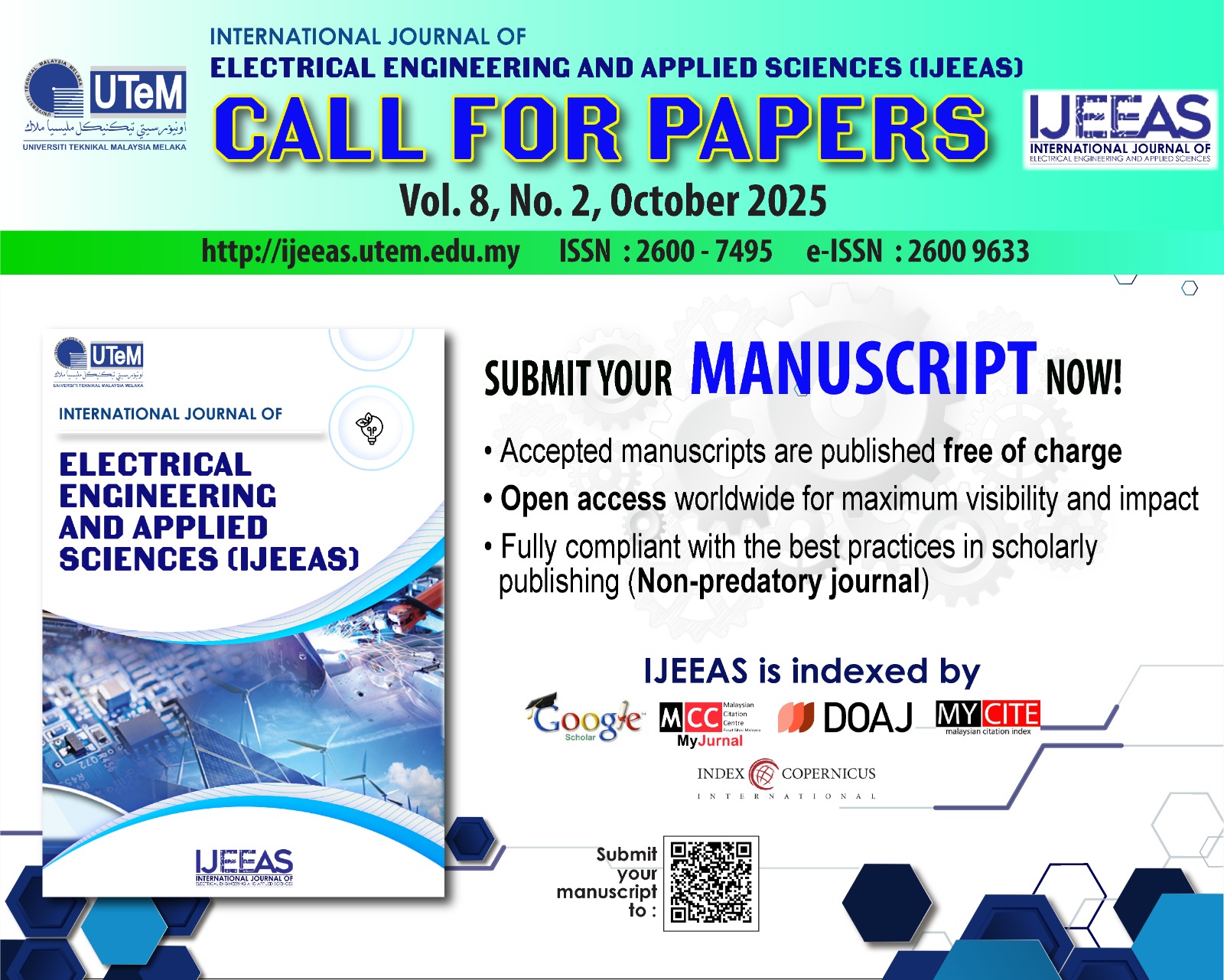Design of Wireless Automatic Microwave Antenna Alignment System
Keywords:
Antenna, Design, Xbee, AlignmentAbstract
Microwave link alignment is an important operation in communication systems. Misalignment in line of sight link due to rain, wind etc is considered the basic problem faced by the microwave system. This problem caused a direct termination of the microwave link. Automatic antenna alignment will guarantee best communication at the link’s ends without any risks of human interface. This paper presents low cost design of an automatic antenna alignment system based on Arduino and using Xbee wireless technology. The design proposed in the paper is by automatically adjusting the horizontal and vertical angles in the transmitter and receiver sides of the microwave link. The controller compares the measured values of these two angles with the reference values. The correction of error in the angles is done by moving the antenna towards the correct position. The design was tested in different angles positions and the results are reported in the paper. The simulation results verify that the system works successful.
Downloads
References
Exalt, “Technical White Paper Microwave Fundamentals Series Antenna Alignment for Terrestrial Microwave Systems”,https://www.moonblinkwifi.com/files
Hassan, Ahmad Kamal Hoque, Ahsanul , “Automated Microwave Antenna Alignment of Base Transceiver Station” , (2012) , A thesis submitted to the faculty of Karlstad University.
Shire, Gavin G.; Karen Brown; Gerald Winegrad (June 2000). "Communication Towers: A Deadly Hazard to Birds", Vol.4 , PP.40-47 .
Minin, Igor &Minin, Oleg & Stout-Grandy, Sara &Petosa, A & Wight, James. (2008). Recent Advances in Fresnel Zone Plate Antenna Technology. Microwave Journal.
Støttrup-Andersen, Ulrik&Gunhard Nielsen, Mogens& Brink Laursen, Thomas. (2017). Optimisation of masts and towers. ce/papers,vol.1,pp.4361-4370.
L. Skrzypczak, D. Grimaldi, R. Rak , “Basic characteristics of zigbee and simpliciti modules to use in measurement systems” , (2009,) , XIX IMEKO World Congress Fundamental and Applied Metrology , Vol.2 , PP.1456-1460.
Wibisono, Muhammad & , Iskandar&Munir, Achmad. (2016). Development of automatic VSAT antenna pointing system based on AVR microcontroller,Metrologia The World Scientific and Engineering Academy and Society, At Barcelona Spain,Vol3,pp.10-13.
Singh, Hemant&kaur, harwinder. (2016). Automated Alignment of Microwave Antenna of Base Transceiver Station by Utilizing Hybrid Sources, Conference of the world scientific and engineering socitety.Barcelona ,spain.PP.103-110.
Prassanna.S,Mauli.S,Arun.Q and Ambadkar.G. (2016), ”Automatic Antenna Positioning System”, International Journal for Scientific Research & Development Vol(4) No(03),ISSN:2321-0613.
Adib, Fadel& Kumar, Swarun& Aryan, Omid&Gollakota, Shyamnath&Katabi, Dina. (2013). Interference alignment by motion,.in proceeding of 19th annual international conference on mobile computing and networking Miami,USA,.PP.279-290.
Caldeirinha, Rafael &Fernandes, Telmo& Ferreira, David &Feitor, Bruno. (2011). Automatic Antenna Alignment System (A3S),conference on electronics, Telecommunications and Computers (CETC2011) Lisbon,Portugal ,
Y.J. & H Chang, K & C Chon, J & Oh, C.Y.. (2004). Automatic alignment method for calibration of hydrometers. Metrologia. Vol4,PP.375-380.
Online Antenna Basics,http://wireless.ictp.it/handbook/C4.pdf, May 2011.
Downloads
Published
How to Cite
Issue
Section
License
Authors who publish with this journal agree to the following terms:
- Authors retain copyright and grant the journal right of first publication with the work simultaneously licensed under a Creative Commons Attribution License that allows others to share the work with an acknowledgement of the work's authorship and initial publication in this journal.
- Authors are able to enter into separate, additional contractual arrangements for the non-exclusive distribution of the journal's published version of the work (e.g., post it to an institutional repository or publish it in a book), with an acknowledgement of its initial publication in this journal.
- Authors are permitted and encouraged to post their work online (e.g., in institutional repositories or on their website) prior to and during the submission process, as it can lead to productive exchanges, as well as earlier and greater citation of published work (See The Effect of Open Access).







